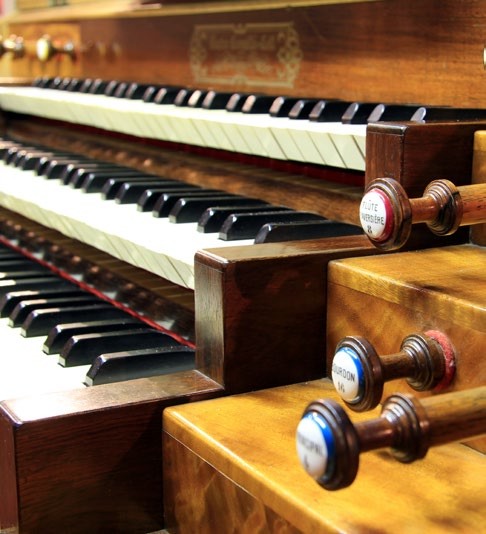Not all organs just play hymns
James F McKellican reflects on the place of organs not located in churches.
INCLUDED in the 1914 offer of money (£100,000) to build a ‘Hall for the people of Dundee,’ James Key Caird (later Sir James) stipulated that an organ be included to provide musical entertainment for the populace.
Remember that this was a time when people fiddled around with cat’s whiskers on their crystal wireless sets.
The organ was built under the direction of Alfred Hollins, organist, composer, recitalist and designer who presided at the console of Free St George’s West in Edinburgh and who was also blind.
The instrument was the first concert organ built by Harrison & Harrison of Durham. This concert organ differs from a church organ by having an Orchestral Manual as opposed to a Choir Manual in the keyboard set up. Inaugurated in 1923 by Hollins but never revisited by him, the early days of the instrument seem to have been confined to frequent recitals by visiting recitalists. The organ was not tuned to accompany orchestras. It took almost four years to appoint a City Organist.
In December 1926, James Hinchliffe was appointed to the post and things began to take off. He started weekly concerts playing popular orchestral music and light classics as well as ‘serious’ music. Audiences, like today, varied but this was still a way to hear music when wireless reception was still chancy.
With wartime and the advent of television, the popularity of these concerts declined and the chance to hear the organ was limited to ‘official’ events. Economic factors and changing attitudes meant the importance of the instrument slid down the scale and doubts arose to its viability.
In the late 1980s the Caird Hall Organ Trust was set up to resurrect the organ and a complete rebuild by Harrisons costing £150,000 was carried out. No change to the specification was made but the organ was retuned to orchestral pitch to enable organ concertos to be included in programmes.
In 2009 a group of like-minded people including the current City Organist (Stuart Muir) and Caird Hall Manager (Susan Gillan) met to establish the Friends of the Caird Hall Organ, This was felt necessary as the historical importance of the instrument was being uncovered and it was felt that a ‘ginger group’ presence would encourage the use of it to be expanded especially if financial stability through fundraising was possible. The Friends have also concentrated on the very popular school education programmes for upper primary classes as well as a ‘hands on’ experience for senior music pupils.

We continue to raise money to help ensure the future financial security of the organ. We now run Organathons, Silent Movie Nights, Come and Sing, Recitals by internationalists and local players, as well as helping with the Summer Organ Concerts run by Dundee City Council (via Leisure and Culture Dundee). We also reach out to other groups by talks on the non-technical history of how the now recognised as world famous organ came to be in Dundee and have just celebrated its centenary.
This organ is not lying dormant today.
James F McKellican is Archivist and Former Chair, Friends of the Caird Hall Organ SC041021